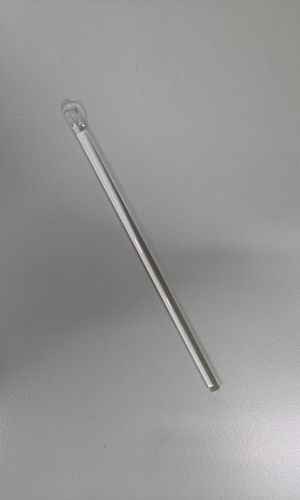Glass rod facts for kids
Glass rods are simple tools often used in science labs. They look like thin, clear sticks. These rods are very helpful for mixing liquids, like when you stir sugar into water, but in a science setting.
Glass rods are also great for spreading liquids smoothly and evenly. For example, if a scientist needs to put a very thin layer of a liquid onto a glass slide to look at it under a microscope, a glass rod can help spread it perfectly.
Why Glass Rods Are Special
Glass is used for these rods because it's a very special material. Most chemicals used in a lab do not react with glass. This means the glass rod won't change the chemicals you are working with, and the chemicals won't damage the rod. This makes them safe and reliable for many experiments.
Glass rods are made in different sizes. Common sizes are about 3 millimeters, 6 millimeters, and 10 millimeters thick. This gives scientists options for different tasks.
Glass Rods and Early Electricity
Long ago, glass rods played an important role in understanding electricity. Scientists would rub glass rods with materials like silk or fur. When they did this, the rods would build up an electric charge. These early experiments helped people learn about how electricity works and how charges can be created.
Images for kids
See also
 In Spanish: Varilla de vidrio (química) para niños
In Spanish: Varilla de vidrio (química) para niños



